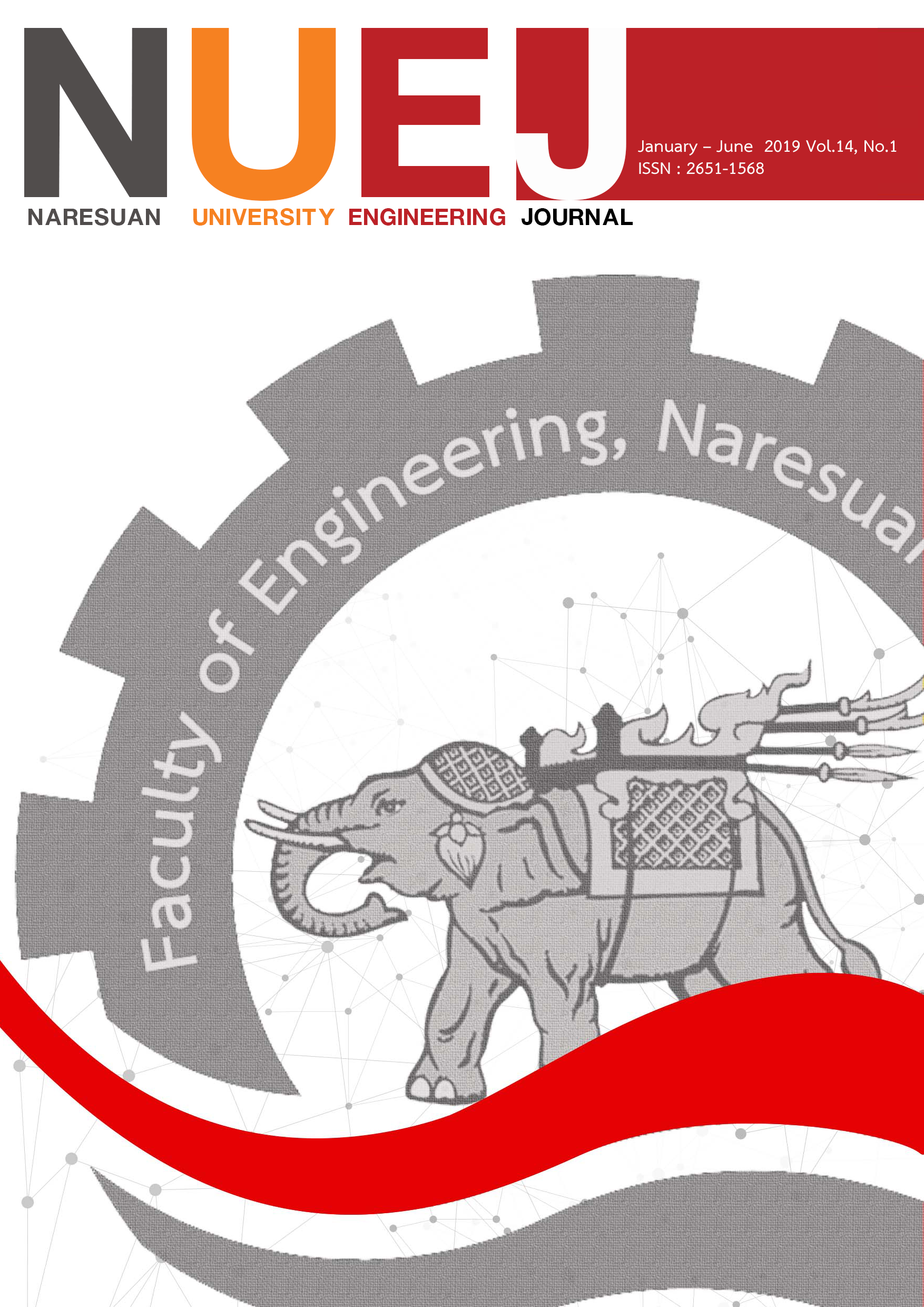Development of Forming Processes for back bumper: Shell Bar RR Impact RH/LH from High Strength Steel using Finite Element Simulation
Main Article Content
Abstract
The purpose of this research was to use Finite element method (FEM) to predict the optimal deep drawing parameters that can eliminate defects such cracks and wrinkles in a specific back bumper part "Shell Bar RR Impact RH/LH". The material used was a high strength sheet steel JSC440W sheet. The parameters investigated were the blank holder force (BHF), the coefficient of friction and the drawbead restraining force (DBRF). From the results, when the blank holder force was decreased to 30 tons and the coefficient of friction to 0.05, the number of cracks on the part were decreased, but the number of wrinkles have a tendency to increase due to the asymmetrical shape of the part. For this reason, researcher have to focus at die design problems and adjust DBRF in each drawbeads. The used of a DBRF of number one drawbead at 154.49 N/mm (radius 5 mm, height 5 mm and width 15 mm) and DBRF of number three drawbead at 99.75 N/mm (radius 5 mm, height 3.5 mm and width 15 mm) was found to eliminated part defects and improved product quality. In conclusion FEM can eliminated the problem on the actual workpiece, in the same way it can reduced time and waste in trial and error process precisely.
Article Details
References
[2] Buranathiti, T., & Phongphay, T. (2007). Forming design of engine cross member via tearing and wrinkling analysis. The Journal of KMUNB, 17 (2), 52-60.
[3] Lee, M.G., Chung, K., Wagoner, R.H., & Keum, Y.T. (2008). A numerical method for rapid estimation of drawbead restraining force based on non-linear, anisotropic constitutive equations. International Journal of Solids and Structures, 45, 3375-3391.
[4] Kadkhodayan, M., & Moayyedian, F. (2011). Analytical elastic–plastic study on flange wrinkling in deep drawing process. Scientia Iranica, 18, 250-260
[5] Hu, J., Marciniak, Z., & Duncan, J. (2002). Mechanics of sheet metal forming (2nd ed.), MA: Betterworth-heinemann.
[6] Standard Test Method for Plastic Strain Ratio r for Sheet Metal. (2010). West Conshohocken, PA: ASTM International.
[7] Banabic, D. (2010). Sheet Metal Forming Processes Constitutive Modelling and Numerical Simulation, Berlin: Springer-Verlag Berlin Heidelberg.
[8] Bae, G.H., Song, J.H., Huh, H., Kim, S.H., & Park, S.H. (2007). Simulation-based prediction model of the draw-bead restraining force and its application to sheet metal forming process. Journal of Materials Processing Technology, 187-188, 123-127

